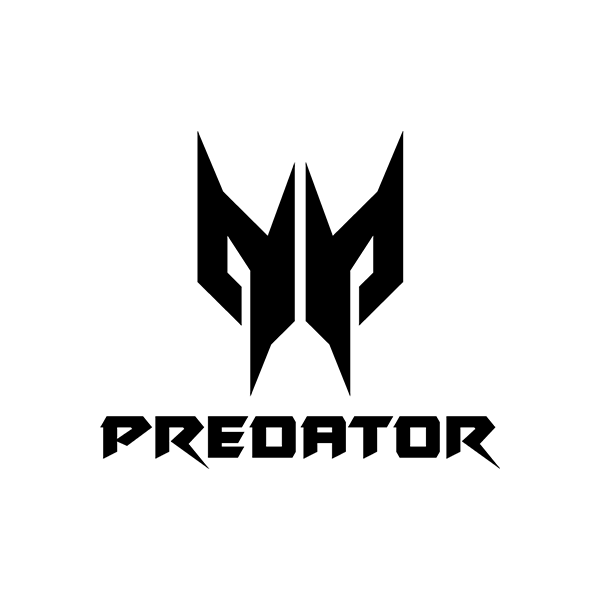
Indie game developers have been responsible for some of the most memorable gaming experiences over the last few decades. However, there is some disagreement on what defines an indie game. In this article, we will dive into how the term indie came about, discuss the history of indie game development, and look at some of the most notable indie titles of the last ten years.
What are indie games?
The term “indie” is just a shortened version of “independent” and indicates that the developers not only created the game but also took care of the marketing and everything else that was required to successfully launch their game.
There are two main steps in creating a video game: first, you have to develop the game itself. Then, you need to sell it. For the development part, a team (or a single person) only needs to have an idea and enough resources to program, design, compose sounds, and create visual assets for the game. Often, developer teams comprise programmers, artists, musicians, and others who should all be paid appropriately for their work, which demands a lot of time and money. That is even before worrying about a legal team, accountancy, and marketing. This is where publishers come in.
Publishers are companies responsible for financing game projects, taking care of marketing, reaching out to journalists who can review the game, and even taking care of legal issues. AAA publishers, like Obsidian Entertainment, even own the copyright of the games they have funded. It is not uncommon for a game idea to come initially from a publisher who owns the intellectual property and who then hires a studio to develop the project. The main goal of a publisher is to sell a game. Developers will often discuss design ideas with the publisher’s marketing team so that the game can sell as many copies as possible.
How are indie games different from regular games?
For small developers working on their first game project, chances are publishers will not be interested. In addition to game development, indie developers have to handle all the work a publisher does. The upside to not having a publisher is that developers get to keep the copyrights of everything they create, which allows them to protect their ideas and also explore their work in future sequels, remakes, or spinoffs. Without a publisher involved, the developers keep their independence. And that is where the term “indie” originally comes from.
History

In the early 1980s, gamers moved from consoles to the burgeoning PC market to play and even create their own games. During this era, playing new games on a PC was as simple as coding it yourself from a magazine. If there was a bug, you would have to wait a month before an update was written out for you to copy. Often, you solved bugs yourself. Two of the biggest games to emerge from this early period were Football Manager, created by designer Kevin Toms, and a small shooter called Jetpac. The indie developers of this period sold their games via mail order in the absence of high street retailers.
Over the following two decades, commercial game development and distribution eventually came to be dominated by big publishers and retailers. To survive, indie developers started giving away their games for free in a model called shareware, which encouraged users to rip software sent to them and send it on to whomever they thought would appreciate it, paying for the full version of the game only if they truly enjoyed playing it.
In 2005, Valve PC’s Steam digital distribution service revolutionized the video game industry. Together with Xbox Live Arcade, Steam brought underground indie developers back into the spotlight. Around this time, software kits that simplified game development were created: Game Maker and Unity became staples of a programmer’s toolkit.
The wildly successful Indie Game: The Movie documentary in 2012 proved pivotal to the growing acceptance of the indie game scene, and three titles, Super Meat Boy, Braid, and Fez, alongside Minecraft, would come to define the Indie Golden Era of the early 2010s and lead the way toward the great titles available today.
What are the best indie games?
A lot of people think of indie titles as cute little games with retro graphics created by one or two people, but indie games can be much more than that. Various indie horror games, platformers, and map exploration games have all been developed. The following are a few notable indie games of the last ten years:
This War of Mine (2014)
This War of Mine, developed by 11 bit studios, is a groundbreaking indie game that offers a poignant portrayal of civilian life during war, diverging from the typical war game narrative focused on combatants. In this survival strategy game, players manage a group of civilians trapped in a besieged city, struggling with a scarcity of resources, moral dilemmas, and the constant threat of conflict. The game is renowned for its emotional impact, grim realism, and the profound moral choices it imposes, forcing players to confront the harsh realities and ethical compromises of survival in war. The game's unique perspective, compelling narrative, and innovative gameplay mechanics have earned it critical acclaim, highlighting the potential of indie games to explore serious, thought-provoking subject matter.
Undertale (2015)
Undertale, developed by indie developer Toby Fox, is a renowned role-playing game known for its unique and innovative approach to gameplay and narrative, allowing players to choose between combat and nonviolent interactions with monsters, leading to multiple endings. The game's distinctive charm lies in its quirky characters, clever dialogue, and a rich, emotionally resonant story, coupled with a memorable, genre-blending soundtrack. Undertale’s critical and commercial success is attributed to its subversion of RPG tropes, moral complexity, and the impactful choices it offers players, setting a high standard in the indie gaming community and exemplifying the profound narrative experiences that can be delivered through the medium.
Firewatch (2016)
By indie studio Campo Santo, Firewatch, is a first-person adventure game distinguished by its visually striking art style, evocative narrative, and atmospheric setting in the Wyoming wilderness. The player assumes the role of Henry, a fire lookout assigned to watch for forest fires, unraveling a web of mysteries by exploring his surroundings and interacting with his supervisor, Delilah, via radio. The compelling relationship dynamics, combined with the game’s emphasis on choice and consequence, have received widespread acclaim, allowing for a rich, immersive experience where dialogue and character development are paramount. "Firewatch" stands out for its ability to weave narrative and environmental storytelling seamlessly, making it a hallmark example of the narrative-driven experiences that indie games can offer.
Stardew Valley (2016)
Having had a farm bequeathed upon you by your dying grandfather, your office drone heads to rural pastures to get up early, plant seeds, tend the soil, and just generally do farm things. Stardew Valley requires you to build relationships, contend with the brutal realities of corporate greed and, of course, ensure your farm proves fruitful. As you build out your farm, you can explore monster-ridden caves, charm or neglect local townsfolk, and even go fishing.
Hollow Knight (2017)
Hollow Knight is a critically acclaimed action-adventure game developed by indie studio Team Cherry, characterized by its intricate and atmospheric hand-drawn art, deeply immersive lore, and meticulously designed, sprawling world. Set in the mysterious, abandoned kingdom of Hallownest, players navigate a labyrinthine environment, battling a myriad of creatures and uncovering hidden secrets, earning it praise for its challenging gameplay and intricate level design. It has garnered immense popularity and acclaim due to its depth, attention to detail, compelling storytelling, and the rich, immersive experience it offers, all achieved on an indie budget, symbolizing the remarkable creative potential inherent in independent game development. For those interested in more Hollow Knight content, check out our article on SilkSong and Best Hollow Knight mods.
Hades (2020)
In this Greek mythology–themed game, players take the place of Zagreus, Prince of the Underworld, and proceed through randomly generated dungeon-like chambers. Zagreus’ mission is to escape the realm of Hades, his father, to a new life on the surface. As Zagreus, players have a deceptively simple combat system consisting of an attack, a special, a dash, and a cast, with opportunities to customize their skills through stat increases, status effects, and new abilities.
Kena: Bridge of Spirits (2021)
In this action-adventure game, a young spirit guide named Kena uses her magical abilities to help deceased people move from the physical to the spirit world. Players use Kena's staff to attack enemies and her pulse ability for defense as they collect small spirit companions known as the Rot, who help to complete tasks and battle against enemies.
Where can you buy indie games?
Developers tend to release their games on platforms that offer the best access to their target audience. Three of the most well known marketplaces are the following:
- Steam: the most well-known digital distribution platform. Most indie developers will try to publish here.
- GOG.com: a platform with a curated selection of quality games.
- Itch.io: a marketplace dedicated solely to indie games.
- Game Jolt: an indie-friendly platform with a community of visual artists, musicians, streamers, writers, and fans.
Big-budget games from AAA publishers may be the historic face of the video game industry, but the indies were the creative backbone supporting the very experimentation, personalization, and dedication that laid the foundations of the entire medium from the start.








